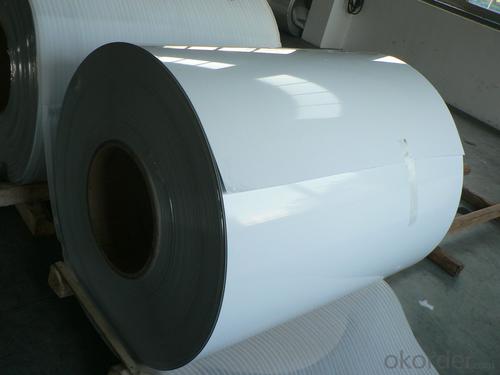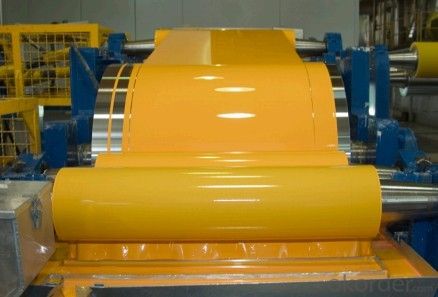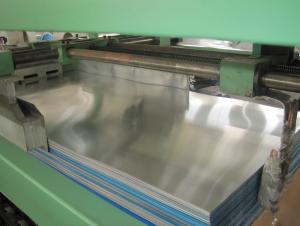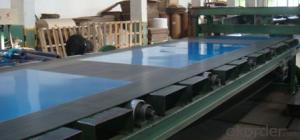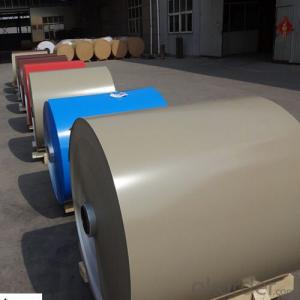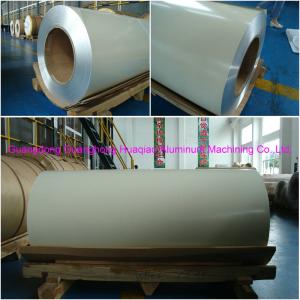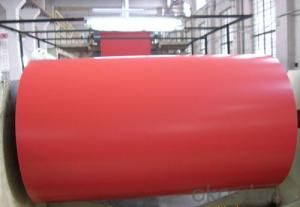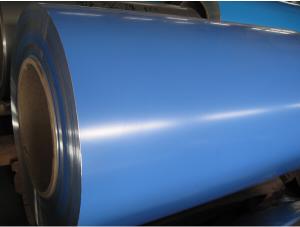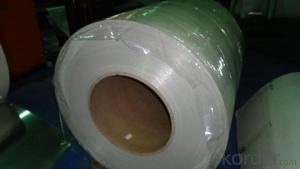Aluminum Perforated Sheets - Aluminium PE Power Coating Coil for Construction
- Loading Port:
- Shanghai
- Payment Terms:
- TT OR LC
- Min Order Qty:
- 8 m.t.
- Supply Capability:
- 2000 m.t./month
OKorder Service Pledge
OKorder Financial Service
You Might Also Like
Specification
Structure of Aluminium PE Prower Coating Coil Specialised in Construction field Description:
Coated aluminum coil/sheet are of a wide range of colors, which gives wonderful appearance no matter in residential and commercial constructions of great exhibition centers.
The coated aluminum coil/sheet have been widely used in the fields of construction and decoration( garage doors, ceiling etc.), electronic appliances, lighting decoration, air-condition air pipes, sandwich panels and drainages etc.
Main Features of theAluminium PE Prower Coating Coil Specialised in Construction field:
1) High flexibility
2) Impact resistance
3) Excellent weather-proof durability
4) Anti-ultraviolet
5) High erosion resist
Images of the Aluminium PE Prower Coating Coil Specialised in Construction field:
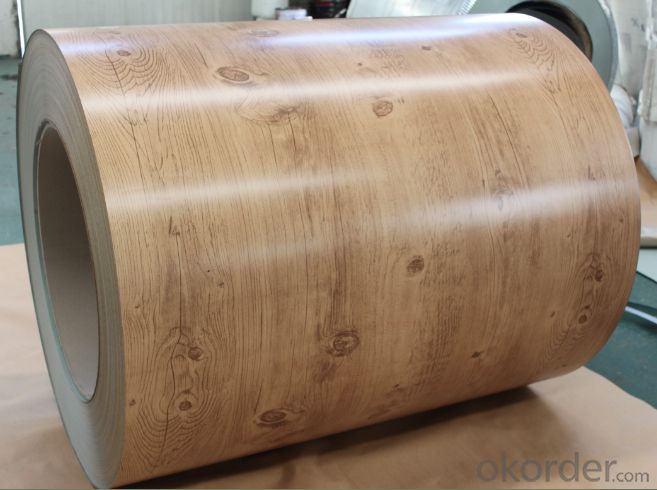
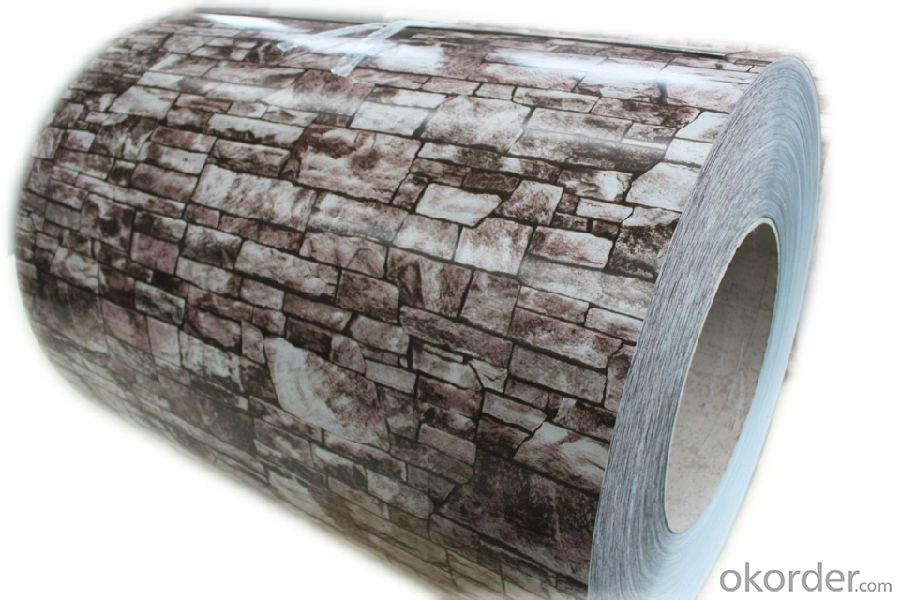
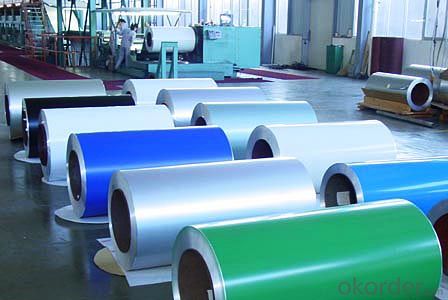
Aluminium PE Prower Coating Coil Specialised in Construction field Specification:
Alloy | A1100,A3003,A1050,A8011 etc |
Temper | H16,H18,H24 |
Thickness | From 0.024mm to 1.2mm |
Width | Standard width:1240mm |
Special width:1300mm,1520mm,1570mm,1595mm | |
Diameter | Standard dia:1200mm |
Interior dia:150mm,405mm,505mm | |
Weight | 2.5 T/coil,3.0 T/coil |
Coating | PE, PVDF, AC |
Surface | Embossed, mill finish, coated |
Color | AS to code RAL |
Gloss | 10-90%(EN ISO-2813:1994) |
Coating Thickness | PE: more than 18 micron |
PVDF: more than 25 micron | |
Coating Hardness (pencil resistance) | More than 2h |
Coating adhesion | 5J(EN ISO-2409:1994) |
Impact Resistance | No peeling or cracking(50 kg/cm,ASTMD-2794:1993) |
Flexibility (T-bend) | 2T |
MEK resistance | More than 100 |
FAQ Aluminium PE Prower Coating Coil Specialised in Construction field:
a.What is monthly capacity
---CNBM is one stated own company and our monthly capacity is about 2000tons.
b. Now which countries do you export your goods?
---Now we export to South East Asia,Africa, North America,South America ect.
- Q: How to distinguish aluminum sheet from magnesium sheet?
- put two sheets into excess NaOH. The one that reacts with NaOH, generating sediment, is magnesium sheet,(sediment, but Al(OH)3 is amphoteric:Mg(OH)2) another one without sediment is aluminum sheet(in fact, there is sediment Al(OH)3, but it will react with alkali,)
- Q: Is plastic or alumium container more harmful to store food in if it does get to the food while heating.
- Both are toxic, try to use ceramic or glass.
- Q: What are the different fabrication methods used for aluminum sheets?
- Some of the different fabrication methods used for aluminum sheets include rolling, extrusion, casting, and stamping.
- Q: What are the different methods of surface preparation for aluminum sheet?
- Depending on the desired finish and purpose, there are various approaches to preparing aluminum sheet surfaces. 1. Chemical Cleaning: To eliminate dirt, grease, and contaminants, chemical solutions are employed. The sheet is typically soaked in the cleaning solution and thoroughly rinsed to ensure complete removal of any residues. 2. Mechanical Cleaning: Imperfections or coatings are removed through mechanical processes like sanding, grinding, or brushing. Abrasive materials or tools are used for sanding or grinding, while wire brushes are employed for brushing. 3. Etching: A textured finish that enhances adhesion for subsequent coatings or finishes is achieved through the application of acid or alkaline solutions to the aluminum sheet. This process removes a thin layer of the metal, creating a rough surface. 4. Anodizing: By immersing the sheet in an electrolytic solution and passing an electric current through it, an oxide layer is formed on the aluminum sheet. Anodizing not only improves the appearance but also provides protection against corrosion. 5. Conversion Coating: The surface of the aluminum sheet is converted into a more corrosion-resistant material through chemical processes like chromate or phosphate conversion coating. These coatings offer additional protection and improve the bonding of subsequent coatings. Each method of surface preparation for aluminum sheet has distinct advantages and is selected based on specific requirements. It is crucial to choose the appropriate method to ensure proper adhesion of coatings and finishes, as well as to enhance the overall durability and appearance of the aluminum sheet.
- Q: Can aluminum sheets be textured for grip?
- Indeed, grip can be achieved through texturing aluminum sheets. Numerous techniques exist to impart texture onto aluminum sheets, including embossing, etching, and the application of a non-slip coating. By undergoing these processes, patterns, grooves, or raised bumps can be added to the sheet's surface, heightening its grip and rendering it suitable for situations where slip resistance holds significance. The textured surface amplifies the friction between the sheet and any object it comes into contact with, thereby delivering a secure grip, even in damp or slippery circumstances.
- Q: Can aluminum sheet be used for chemical processing?
- Yes, aluminum sheet can be used for chemical processing. Aluminum has excellent corrosion resistance and is often used in chemical processing industries for various applications such as storage tanks, reaction vessels, and heat exchangers.
- Q: What are the standard sizes and availability of aluminum sheets in the market?
- The standard sizes and availability of aluminum sheets in the market can vary depending on the location and specific requirements. However, there are some commonly available sizes that can generally be found in most markets. In terms of thickness, aluminum sheets are commonly available in 0.02 to 0.2 inches (0.5 to 5 millimeters) thickness range. Thinner sheets (0.02 to 0.06 inches) are often used for lightweight applications such as signage or crafts, while thicker sheets (0.1 to 0.2 inches) are typically used for more heavy-duty applications like construction or industrial purposes. Regarding width and length, standard aluminum sheet sizes are often offered in 4 feet by 8 feet (48 inches by 96 inches) or 4 feet by 12 feet (48 inches by 144 inches). These dimensions are widely available and suitable for various applications. However, it's important to note that custom sizes can also be ordered or cut from larger sheets to meet specific project requirements. Availability of aluminum sheets can be found in various locations, including local hardware stores, metal suppliers, and online marketplaces. It is always recommended to check with local suppliers or conduct online research to determine the specific sizes and availability in your area. Additionally, different grades or alloys of aluminum may have varying availability, so it's essential to consider the specific requirements of your project when sourcing aluminum sheets.
- Q: Is it possible to incorporate recycled aluminum windows into a construction or renovation project?
- <p>Yes, you can use recycled aluminum windows in your project. Recycled aluminum windows are not only environmentally friendly but also offer similar performance to new aluminum windows. They are durable, lightweight, and maintain good thermal efficiency. When selecting recycled aluminum windows, ensure they meet the required quality standards and are suitable for your project's specifications. It's also important to consider the condition of the windows and any necessary refurbishment or maintenance they might require.</p>
- Q: What are the different alloys used in aluminum sheets?
- Some of the different alloys used in aluminum sheets include 1100, 3003, 5052, and 6061.
- Q: What are the different grades of aluminum sheet?
- There are several different grades of aluminum sheet available in the market, each with its own unique properties and applications. Some common grades include: 1. 1100: This grade is known for its excellent corrosion resistance and high thermal conductivity. It is often used in chemical equipment, reflectors, heat exchangers, and electrical conductors. 2. 3003: This grade is alloyed with manganese, making it highly resistant to corrosion. It is commonly used in cooking utensils, storage tanks, and architectural trim. 3. 5052: This grade has good formability and high fatigue strength. It is often used in marine applications, such as boat hulls and components, as well as in aircraft fuel tanks and structural parts. 4. 6061: This grade is known for its excellent strength-to-weight ratio and good machinability. It is commonly used in automotive parts, bicycle frames, and structural components. 5. 7075: This grade has high strength and toughness, making it suitable for aerospace applications, such as aircraft wings and fuselage structures. Each grade of aluminum sheet has its own specific characteristics and is chosen based on the requirements of the particular application. It is important to consider factors such as corrosion resistance, strength, formability, and machinability when selecting the appropriate grade.
Send your message to us
Aluminum Perforated Sheets - Aluminium PE Power Coating Coil for Construction
- Loading Port:
- Shanghai
- Payment Terms:
- TT OR LC
- Min Order Qty:
- 8 m.t.
- Supply Capability:
- 2000 m.t./month
OKorder Service Pledge
OKorder Financial Service
Similar products
Hot products
Hot Searches
Related keywords



